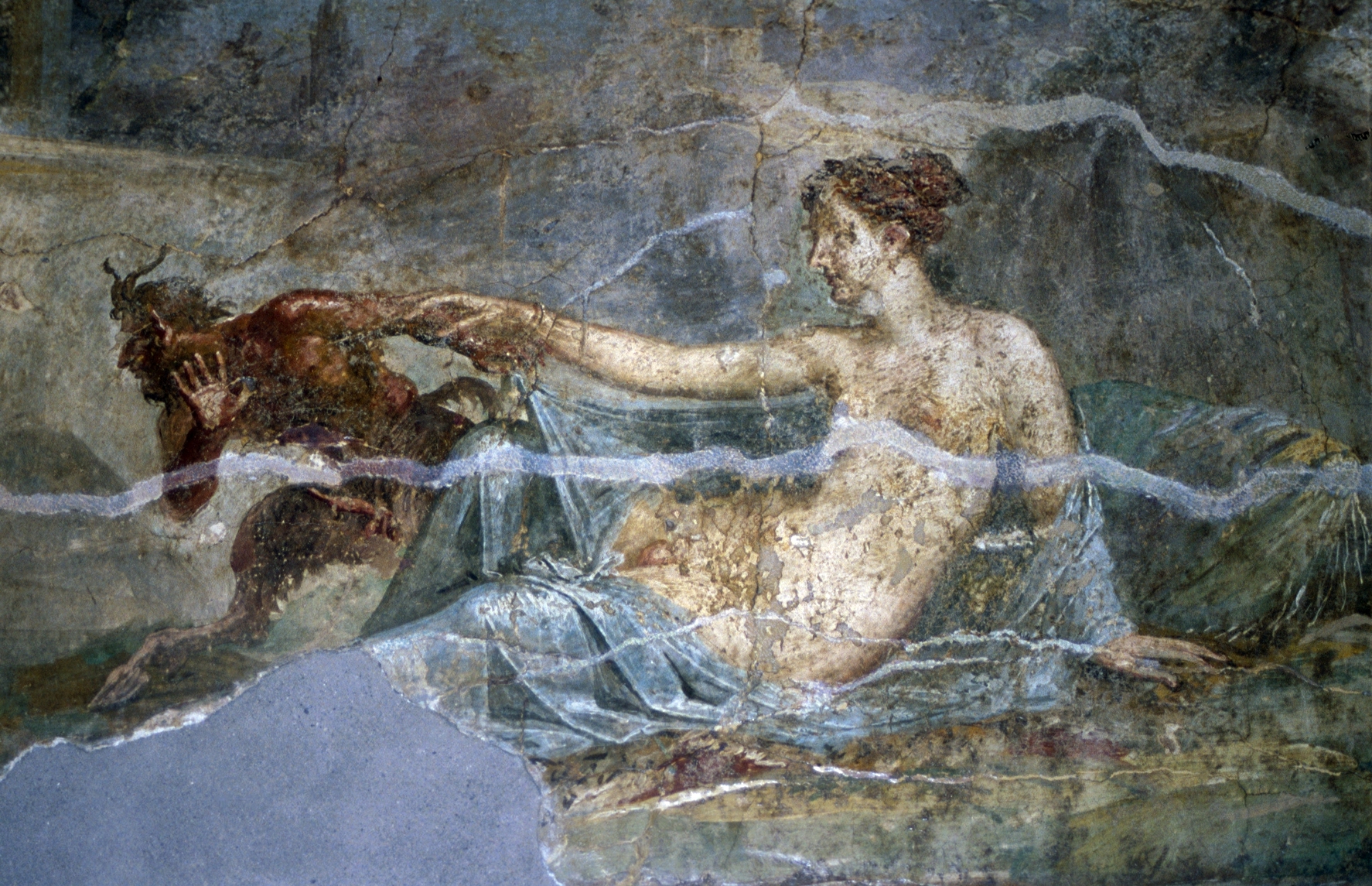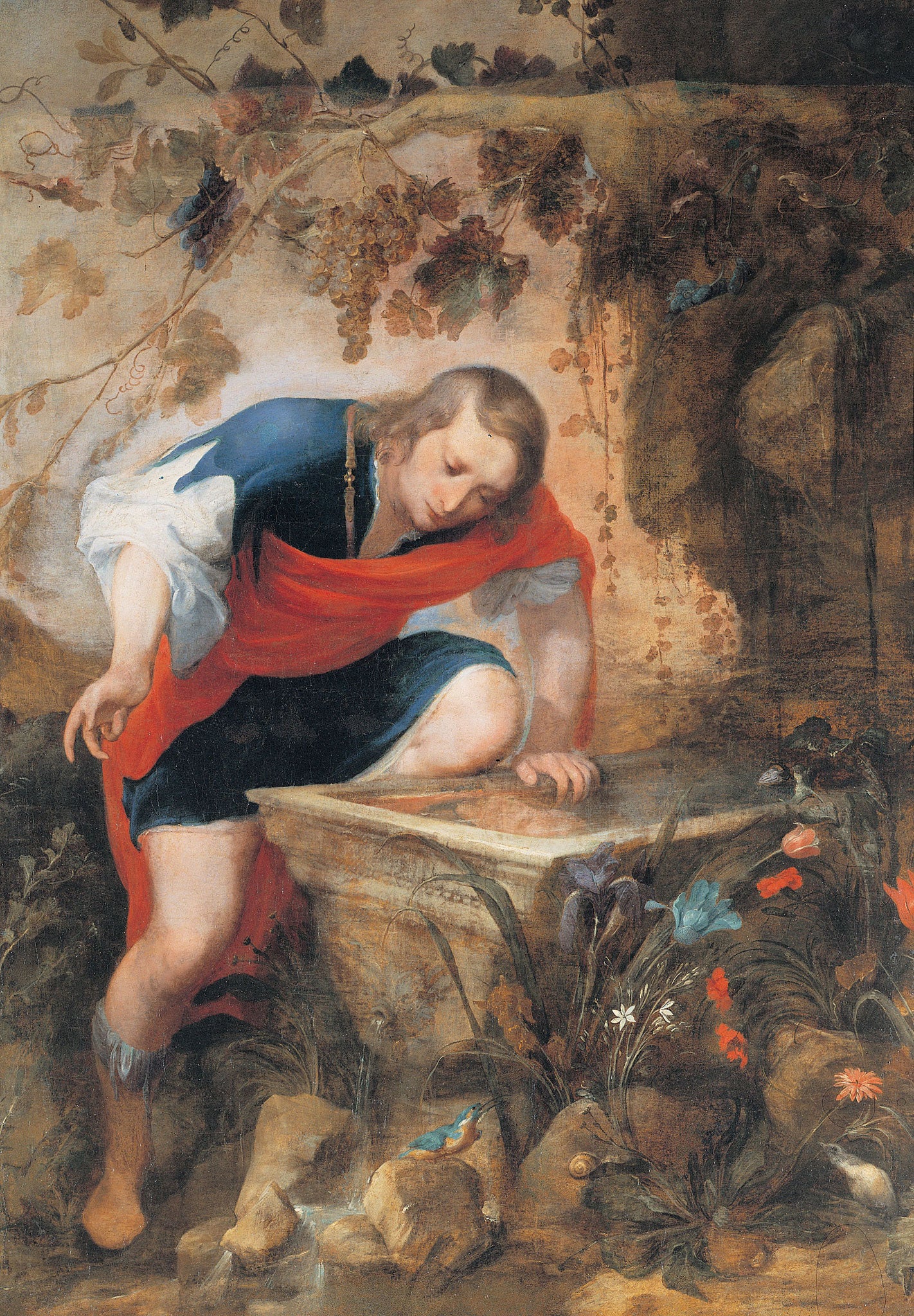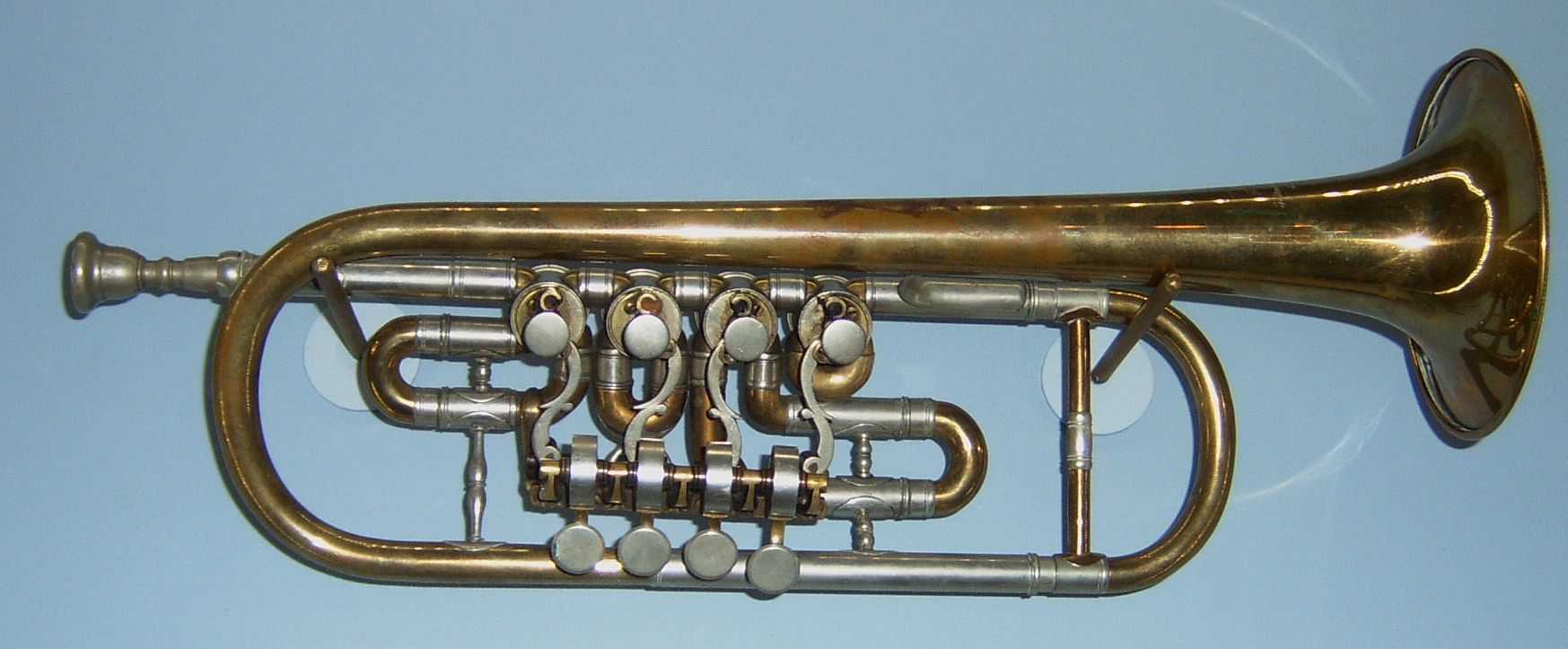|
Myths (Szymanowski)
The Myths Op. 30 is a work for violin and piano written by Karol Szymanowski in 1915 and premiered one year later by Paweł Kochański on violin and the composer on piano. It is dedicated to Kochański's wife, Zofia Kochańska. Similarly to the '' Métopes'' composed around the same time, the ''Myths'' consists of three programmatic miniature tone poems drawing on Greek mythology. The piece was heavily inspired by the composer's earlier travels in Sicily and North Africa and by impressionist music. The work is considered an important milestone in 20th-century violin writing and was heavily admired by Szymanowski's contemporaries, such as Béla Bartók and Sergei Prokofiev. It features heavy use of advanced violin techniques, and the third movement famously contains quarter tones. Performance usually lasts about twenty minutes. Structure The piece has three movements, each depicting a scene from Greek mythology: *''La fontaine d'Arethuse'' ( The Fountain of Arethusa) *''Narci ... [...More Info...] [...Related Items...] OR: [Wikipedia] [Google] [Baidu] |
Violin
The violin, sometimes known as a ''fiddle'', is a wooden chordophone (string instrument) in the violin family. Most violins have a hollow wooden body. It is the smallest and thus highest-pitched instrument (soprano) in the family in regular use. The violin typically has four strings (music), strings (some can have five-string violin, five), usually tuned in perfect fifths with notes G3, D4, A4, E5, and is most commonly played by drawing a bow (music), bow across its strings. It can also be played by plucking the strings with the fingers (pizzicato) and, in specialized cases, by striking the strings with the wooden side of the bow (col legno). Violins are important instruments in a wide variety of musical genres. They are most prominent in the Western classical music, Western classical tradition, both in ensembles (from chamber music to orchestras) and as solo instruments. Violins are also important in many varieties of folk music, including country music, bluegrass music, and ... [...More Info...] [...Related Items...] OR: [Wikipedia] [Google] [Baidu] |
Arethusa (mythology)
In Greek mythology, Arethusa (; grc-gre, Ἀρέθουσα) was a nymph who fled from her home in Arcadia beneath the sea and came up as a fresh water fountain on the island of Ortygia in Syracuse, Sicily. Mythology The myth of her transformation begins in Arcadia when she came across a clear stream and began bathing, not knowing it was the river god Alpheus, who flowed down from Arcadia through Elis to the sea. He fell in love during their encounter, but she fled after discovering his presence and intentions, as she wished to remain a chaste attendant of Artemis. After a long chase, she prayed to her goddess to ask for protection. Artemis hid her in a cloud, but Alpheus was persistent. She began to perspire profusely from fear, and soon transformed into a stream. Artemis then broke the ground allowing Arethusa another attempt to flee. Her stream traveled under the sea to the island of Ortygia, but Alpheus flowed through the sea to reach her and mingle with her waters. ... [...More Info...] [...Related Items...] OR: [Wikipedia] [Google] [Baidu] |
1915 Compositions
Events Below, the events of World War I have the "WWI" prefix. January *January – British physicist Sir Joseph Larmor publishes his observations on "The Influence of Local Atmospheric Cooling on Astronomical Refraction". *January 1 ** WWI: British Royal Navy battleship HMS ''Formidable'' is sunk off Lyme Regis, Dorset, England, by an Imperial German Navy U-boat, with the loss of 547 crew. ** Battle of Broken Hill: A train ambush near Broken Hill, New South Wales, Australia, is carried out by two men (claiming to be in support of the Ottoman Empire) who are killed, together with 4 civilians. * January 5 – Joseph E. Carberry sets an altitude record of , carrying Capt. Benjamin Delahauf Foulois as a passenger, in a fixed-wing aircraft. * January 12 ** The United States House of Representatives rejects a proposal to give women the right to vote. ** '' A Fool There Was'' premières in the United States, starring Theda Bara as a ''femme fatale''; she quickly becomes one o ... [...More Info...] [...Related Items...] OR: [Wikipedia] [Google] [Baidu] |
Suites (music)
Suite may refer to: Arts and entertainment *Suite (music), a set of musical pieces considered as one composition ** Suite (Bach), a list of suites composed by J. S. Bach ** Suite (Cassadó), a mid-1920s composition by Gaspar Cassadó ** ''Suite'' (Penderecki), a 1994 composition by Krzysztof Penderecki ** :Suites (music) *Suite, a set of related illustrations considered to be part of one art composition (e.g., the Vollard Suite by Picasso) *'' Suite!'', a 2019 album by Roberto Magris *"Suite", a poem by Patti Smith from her book ''Babel'' *'' Suite PreCure'', a series of the Pretty Cure anime franchise Architecture and design *Suite (address), a kind of address or location in an office building, shopping mall, etc. *Suite (hotel), a type of hotel room *Secondary suite, an additional separate dwelling unit on a property that would normally accommodate only one dwelling unit Other uses * Suite (geology), a lithodemic unit *Software suite, a collection of related software *Retinu ... [...More Info...] [...Related Items...] OR: [Wikipedia] [Google] [Baidu] |
Compositions By Karol Szymanowski
Composition or Compositions may refer to: Arts and literature * Composition (dance), practice and teaching of choreography *Composition (language), in literature and rhetoric, producing a work in spoken tradition and written discourse, to include visuals and digital space *Composition (music), an original piece of music and its creation * Composition (visual arts), the plan, placement or arrangement of the elements of art in a work * ''Composition'' (Peeters), a 1921 painting by Jozef Peeters * Composition studies, the professional field of writing instruction * ''Compositions'' (album), an album by Anita Baker * Digital compositing, the practice of digitally piecing together a video Computer science * Function composition (computer science), an act or mechanism to combine simple functions to build more complicated ones *Object composition, combining simpler data types into more complex data types, or function calls into calling functions History * Composition of 1867, Austro-Hung ... [...More Info...] [...Related Items...] OR: [Wikipedia] [Google] [Baidu] |
Pan (god)
In ancient Greek religion and Greek mythology, mythology, Pan (; grc, wikt:Πάν, Πάν, Pán) is the god of the wild, shepherds and flocks, Pastoral#Pastoral music, rustic music and impromptus, and companion of the nymphs. He has the hindquarters, legs, and horns of a goat, in the same manner as a faun or satyr. With his homeland in rustic Arcadia (ancient region), Arcadia, he is also recognized as the god of fields, groves, wooded glens, and often affiliated with sex; because of this, Pan is connected to fertility and the season of spring. In Religion in ancient Rome, Roman religion and myth, Pan's counterpart was Faunus, a nature god who was the father of Bona Dea, sometimes identified as Fauna (goddess), Fauna; he was also closely associated with Silvanus (mythology), Sylvanus, due to their similar relationships with woodlands. In the 18th and 19th centuries, Pan became a significant figure in Romanticism, the Romantic movement of western Europe and also in the 20th-centu ... [...More Info...] [...Related Items...] OR: [Wikipedia] [Google] [Baidu] |
Dryads
A dryad (; el, Δρυάδες, ''sing''.: ) is a tree nymph or tree spirit in Greek mythology. ''Drys'' (δρῦς) signifies "oak" in Greek, and dryads were originally considered the nymphs of oak trees specifically, but the term has evolved towards tree nymphs in general,Graves, ch. 86.2; p. 289 or human-tree hybrids in fantasy. Often their life force was connected to the tree in which they resided and they were usually found in sacred groves of the gods. They were considered to be very shy creatures except around the goddess Artemis, who was known to be a friend to most nymphs. Types Daphnaie These were nymphs of the laurel trees. Epimelides The Maliades, Meliades or Epimelides were nymphs of apple and other fruit trees and the protectors of sheep. The Greek word ''melas'', from which their name derives, means both apple and sheep. Hesperides, the guardians of the golden apples were regarded as this type of dryad. Hamadryad Dryads, like all nymphs, were supernaturally ... [...More Info...] [...Related Items...] OR: [Wikipedia] [Google] [Baidu] |
Narcissus (mythology)
In Greek mythology, Narcissus (; Ancient Greek: Νάρκισσος ''Nárkissos'') was a hunter from Thespiae in Boeotia (alternatively Mimas or modern day Karaburun, Izmir) who was known for his beauty. According to Tzetzes, he rejected all romantic advances, eventually falling in love with his own reflection in a pool of water, staring at it for the remainder of his life. After he died, in his place sprouted a flower bearing his name. The character of Narcissus is the origin of the term narcissism, a fixation with oneself. This quality, in turn, contributes to the definition of narcissistic personality disorder, a psychiatric condition marked by grandiosity, excessive need for attention and admiration, and an inability to empathize. Like the myth of Laius and Chrysippus, the myth of Narcissus is a Boeotian pederastic cautionary tale, a story meant to teach by counter-example. Etymology The name is of Greek etymology. According to R. S. P. Beekes, " e suffixes ισ ... [...More Info...] [...Related Items...] OR: [Wikipedia] [Google] [Baidu] |
Quarter Tones
A quarter tone is a pitch halfway between the usual notes of a chromatic scale or an interval about half as wide (aurally, or logarithmically) as a semitone, which itself is half a whole tone. Quarter tones divide the octave by 50 cents each, and have 24 different pitches. Quarter tone has its roots in the music of the Middle East and more specifically in Persian traditional music. However, the first evidenced proposal of quarter tones, or the quarter-tone scale (24 equal temperament), was made by 19th-century music theorists Heinrich Richter in 1823Julian Rushton, "Quarter-Tone", ''The New Grove Dictionary of Music and Musicians'', second edition, edited by Stanley Sadie and John Tyrrell (London: Macmillan, 2001). and Mikhail Mishaqa about 1840. Composers who have written music using this scale include: Pierre Boulez, Julián Carrillo, Mildred Couper, George Enescu, Alberto Ginastera, Gérard Grisey, Alois Hába, Ljubica Marić, Charles Ives, Tristan Murail, Krzysztof Penderec ... [...More Info...] [...Related Items...] OR: [Wikipedia] [Google] [Baidu] |
Piano
The piano is a stringed keyboard instrument in which the strings are struck by wooden hammers that are coated with a softer material (modern hammers are covered with dense wool felt; some early pianos used leather). It is played using a keyboard, which is a row of keys (small levers) that the performer presses down or strikes with the fingers and thumbs of both hands to cause the hammers to strike the strings. It was invented in Italy by Bartolomeo Cristofori around the year 1700. Description The word "piano" is a shortened form of ''pianoforte'', the Italian term for the early 1700s versions of the instrument, which in turn derives from ''clavicembalo col piano e forte'' (key cimbalom with quiet and loud)Pollens (1995, 238) and ''fortepiano''. The Italian musical terms ''piano'' and ''forte'' indicate "soft" and "loud" respectively, in this context referring to the variations in volume (i.e., loudness) produced in response to a pianist's touch or pressure on the keys: the grea ... [...More Info...] [...Related Items...] OR: [Wikipedia] [Google] [Baidu] |
Sergei Prokofiev
Sergei Sergeyevich Prokofiev; alternative transliterations of his name include ''Sergey'' or ''Serge'', and ''Prokofief'', ''Prokofieff'', or ''Prokofyev''., group=n (27 April .S. 15 April1891 – 5 March 1953) was a Russian composer, pianist, and conductor who later worked in the Soviet Union. As the creator of acknowledged masterpieces across numerous music genres, he is regarded as one of the major composers of the 20th century. His works include such widely heard pieces as the March from ''The Love for Three Oranges,'' the suite ''Lieutenant Kijé'', the ballet ''Romeo and Juliet''—from which "Dance of the Knights" is taken—and ''Peter and the Wolf.'' Of the established forms and genres in which he worked, he created—excluding juvenilia—seven completed operas, seven symphonies, eight ballets, five piano concertos, two violin concertos, a cello concerto, a symphony-concerto for cello and orchestra, and nine completed piano sonatas. A graduate of the ... [...More Info...] [...Related Items...] OR: [Wikipedia] [Google] [Baidu] |
Béla Bartók
Béla Viktor János Bartók (; ; 25 March 1881 – 26 September 1945) was a Hungarian composer, pianist, and ethnomusicologist. He is considered one of the most important composers of the 20th century; he and Franz Liszt are regarded as Hungary's greatest composers. Through his collection and analytical study of folk music, he was one of the founders of comparative musicology, which later became ethnomusicology. Biography Childhood and early years (1881–98) Bartók was born in the Banatian town of Nagyszentmiklós in the Kingdom of Hungary (present-day Sânnicolau Mare, Romania) on 25 March 1881. On his father's side, the Bartók family was a Hungarian lower noble family, originating from Borsodszirák, Borsod. His paternal grandmother was a Catholic of Bunjevci origin, but considered herself Hungarian. Bartók's father (1855–1888) was also named Béla. Bartók's mother, Paula (née Voit) (1857–1939), also spoke Hungarian fluently. A native of Turócszentmárton ... [...More Info...] [...Related Items...] OR: [Wikipedia] [Google] [Baidu] |







